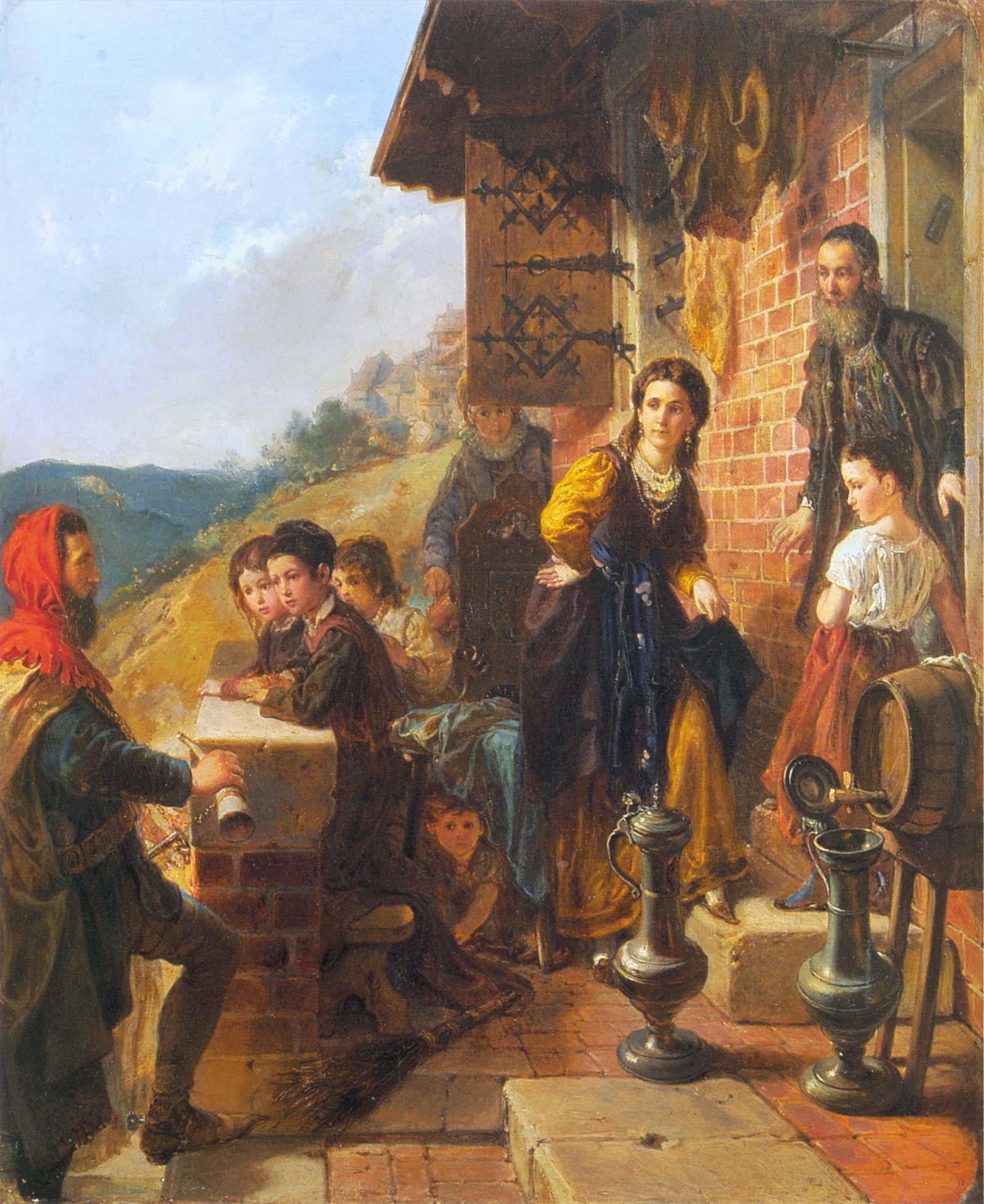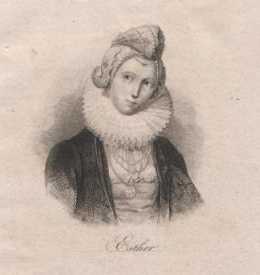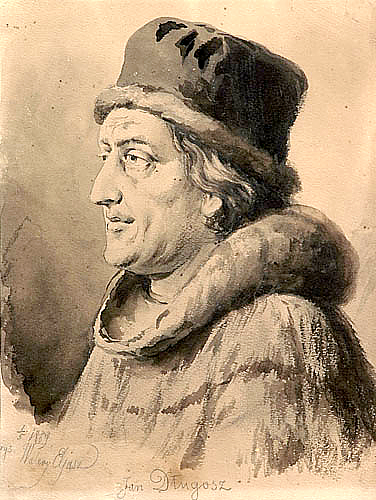


A few years ago, we had the opportunity to see Władysław Łuszczkiewicz's painting "Casimir the Great with Esterka" at the Ossolineum in Wrocław. The Polish monarch was depicted incognito, wearing simple, travel attire. He can be recognized by his distinctive beard and truly regal posture. Interestingly, he is not positioned at the center of the composition. Instead, that place is given to a young woman who, everything indicates, is the titular Esterka, the legendary beloved of the last of the Piast dynasty. It is intriguing to see the emphasis shifted and a woman from the common people, moreover, a Jewess, being highlighted instead of a male ruler. It makes one think, doesn't it?

Casimir the Great visiting Esther, 1870, Wladyslaw Luszczkiewicz
Arguably the most famous misalliance in 14th-century Polish history has served as inspiration for many artists. Apart from Łuszczkiewicz's Esterka mentioned earlier, she has been praised in the works of Krasicki, Kraszewski, and the Bronikowski family. Her fiery romance with Casimir the Great ignited the imagination of subsequent generations since the 15th century. It's a pity that none of the contemporaries of the last Piast and his alleged lover ever mentioned them, and the sources from that time persistently remain silent.

Esterka, before 1839, Leclere
Casimir went down in history not only as a great builder but also as a friend of the Jewish people and an incorrigible womanizer. It is precisely for these two traits that the 15th-century chronicler Jan Długosz decided to reprimand him.
"[...] he took as his mistress a woman of Jewish origin named Esterka, due to her extraordinary beauty. He had two sons with her: Niemierz and Pełka. Also, at the request of the aforementioned mistress Esterka, he granted extraordinary privileges and freedoms to all Jews living in the Kingdom of Poland by royal document (there were suspicions that certain individuals falsified this document), which greatly offended the Majesty of God. Their foul stench persists to this day (…) It is also an abhorrent and condemnable thing that the daughters born from this Jewess, Esterka, were allowed to be raised in the Jewish religion."
You would agree that terms such as mistress, foul stench, abhorrent thing, and offense to the Majesty of God do not sound particularly flattering, do they? Clearly, Master Jan had a certain problem with representatives of the Jewish faith and Catholics who were too positively inclined towards them. In his defense, it must be acknowledged that he was a true product of his intellectual era and, as such, did not perceive ethics in the same way as we, people living in the 21st century, do. It is somewhat ironic that despite Długosz's actions, Casimir became a positive figure in the context of Polish-Jewish relations and a symbol of the intermingling of both cultures.
Unfortunately, Master Jan's chronology of events did not withstand the test of time and, colloquially speaking, it gets a bit jumbled. An example of this can be seen in the alleged dating of Casimir's romance with Esterka to the early 1360s, while their son Niemierz was said to have reached adulthood around the year 1370.

Jan Długosz, 1889, Walery Eljasz Radzikowski
Considering certain inaccuracies in Długosz's account, some historians seem to doubt the truthfulness of the entire relationship and Esterka herself. Researchers point to an oral tradition that utilized certain cultural motifs, and the historical authenticity of a particular figure becomes a secondary matter. Undoubtedly, it is a well-established fact that the last of the Piasts led a lively romantic life, as well as the increased Jewish settlement in the vicinity of Kraków during the mid-14th century.
With the passage of centuries, the legend of Esterka grew and took on different forms. Various towns claimed to be THE place where royal rendezvous took place. Łobzów, Opoczno, Kraków's Kazimierz, Radom, Rzeszów, Bochotnica, Kazimierz Dolny, Sandomierz, and Wiślica all aspired to this title. Quite impressive for a simple mistress, isn't it?
Such a desire to attribute oneself with the beautiful Esterka should come as no surprise. Romantic and forbidden love has always captured our imagination. We want to believe that amidst the imperfections of the world, something beautiful and resilient can exist. Add to that the intertwining of two different, misunderstood communities at the time, and we have a recipe for a legend that will endure for centuries.
Kraków became a symbol of the blending of Polish and Jewish cultures. Simply walking through the streets of Kazimierz reveals the lasting nature of this process. It is in such places that we can best see the richness that different cultures can offer one another.
If you are curious about what pre-war, Polish-Jewish Kraków and Kazimierz looked like, have a look at our Kraków Jewish Heritage tour.